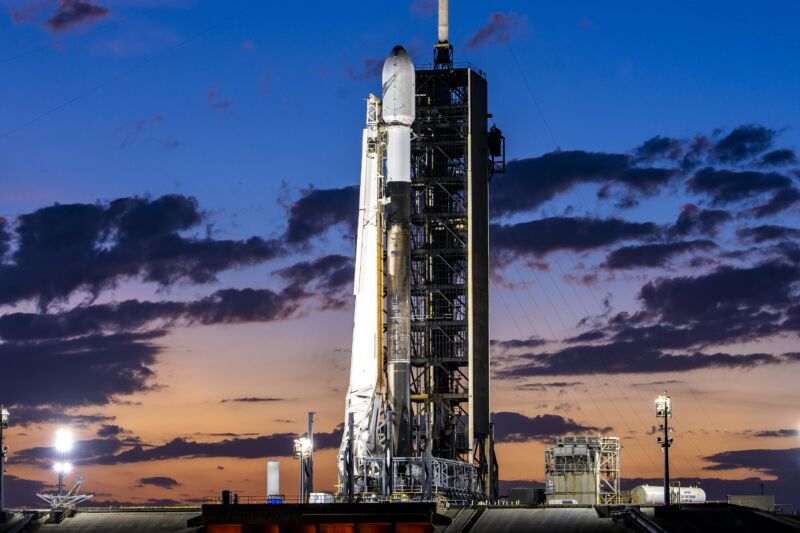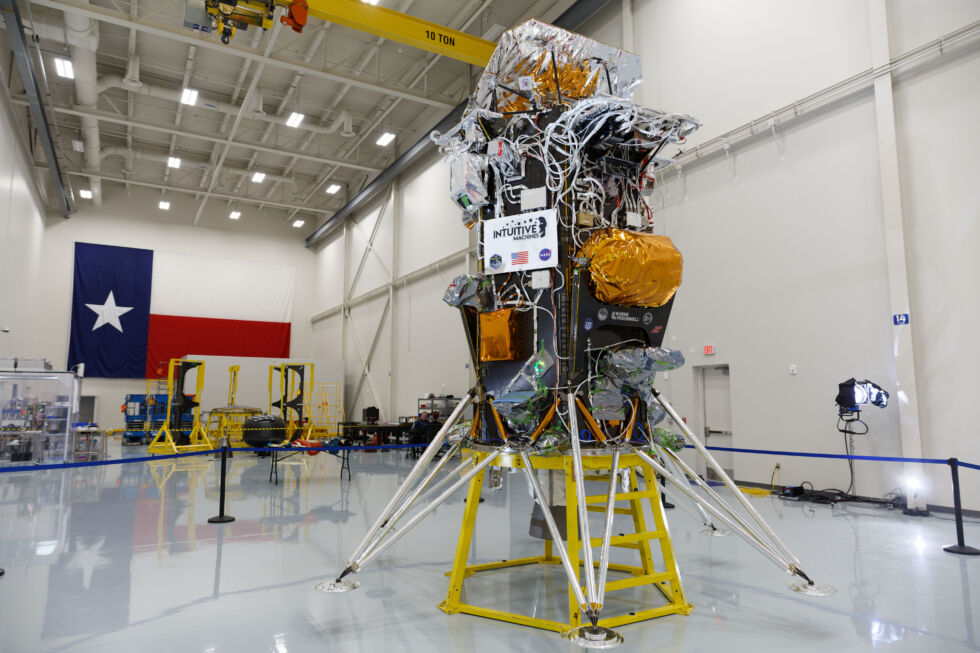
SpaceX
Are you ready for round two of the lunar lottery?
As early as Thursday morning, a Falcon 9 rocket carrying a privately developed lunar lander may launch from Kennedy Space Center in Florida. The vehicle, built by a Houston-based company called Intuitive Machines, will be the second US-made lunar lander to launch from Florida in a little more than a month.
The renaissance in American lunar landers represents the vanguard of NASA’s program to return humans to the Moon and establish a more permanent presence. (No US-built vehicle has made a soft landing on the Moon in more than half a century.) Part of that is finding lower-cost transportation services, which is what these privately built lunar landers are all about.
“We’re trying to create a marketplace where a marketplace does not exist,” Trent Martin, vice president of space systems at Intuitive Machines, said of the Moon during a teleconference this week. “To do that, we have to do it in a cost-conscious way.”
They also have to successfully reach the Moon. The first commercial US lander, Astrobotic’s Peregrine vehicle, launched on January 8 aboard a Vulcan rocket. It sustained a serious blow when one of its propulsion tanks ruptured after the launch. At NASA’s request, Astrobotic sent its spacecraft plunging back into Earth’s atmosphere so it could be disposed of safely. It was not “the outcome we were hoping for,” Astrobotic CEO John Thornton said afterward,
Now it’s Intuitive Machines’ turn.
A propulsion challenge
Unlike most lunar landers developed to date, the Nova-C lander developed by Intuitive Machines has a main engine that uses cryogenic propellants—liquid oxygen and liquid methane. Martin said the company chose these propellants because they are significantly less toxic than hypergolic fuels, and they allow Nova-C to have a more powerful engine that can get to the Moon in days rather than a month or longer.
However, cryogenic fuels are more challenging to work with because they must be kept chilled, and this limits the length of time they can be stored for usage. Because of this, the Nova-C lander will be fueled just a couple of hours before liftoff.
“It’s not trivial to load the liquid oxygen and liquid methane into the vehicle,” said Bill Gerstenmaier, vice president of build and flight reliability for SpaceX.
The company had to modify the second stage of the Falcon 9 rocket to add propellants onto the Nova C lander at the launch pad shortly before liftoff. SpaceX and Intuitive Machines completed two tests of this new procedure over the weekend. It’s a complex process, and during the countdown, SpaceX actually controls six valves on the lunar lander to ensure the integrity of the fueling process. Despite the tests, a non-nominal methane temperature reading observed late Tuesday night scrubbed the first launch attempt a couple of hours before the planned liftoff early Wednesday.
Now the companies will try again early on Thursday morning, with the launch scheduled for 1:05 am ET (06:05 UTC). It will be broadcast on NASA TV.
“I think it’s tremendously exciting to see two private companies working together in this historic moment to deliver these six commercial payloads and six NASA payloads to the surface of the Moon,” Gerstenmaier said.
Getting to the Moon
After the rocket launches, it will essentially put the 2-ton Nova C spacecraft into a translunar injection. From that point, the cryogenic propulsion system will get the spacecraft to the Moon and into orbit. Assuming a launch early on Thursday, Nova C vehicle will reach the Moon in only six days, Martin said.
That would set up a landing attempt on February 22, late in the day. Beginning from a circular orbit 100 km above the Moon’s surface, it will take about an hour for the spacecraft to make a powered descent toward the Malapert crate, only 300 km from the Moon’s south pole. If the landing is successful, it would represent the most poleward soft landing of any previous vehicle.

Lee Hutchinson
If it makes it, of course.
“Landing on the Moon is extremely challenging,” said Joel Kearns, deputy associate administrator for exploration in NASA’s Science Mission Directorate, this week.
The space agency is paying about $118 million for the delivery of six scientific payloads to the lunar surface. In addition, the Nova C vehicle is carrying six additional small private payloads. After Astrobotic’s failure last month, Kearns said it would not be a disaster if the Intuitive Machines lander also fails.
“We’ve always viewed these initial deliveries as a learning experience,” he said.
So why is NASA funding missions that may well fail? The hope is that private companies will eventually get the hang of flying vehicles to the Moon. And once the service becomes more routine, it will cost NASA a fraction of the price it would pay for traditionally developed lunar services. In addition, by bringing the cost down, NASA will also be opening the door to commercial development on the Moon, which should in turn open up even more access to the lunar surface.
In essence, then, NASA is taking some short-term risks for some long-term gains.

